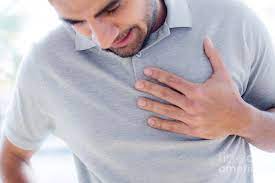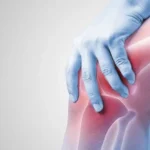Chest pain can feel frightening. It often causes people to think something is seriously wrong. While that’s sometimes true, not every case means a heart attack. Many conditions can cause pain in the chest, ranging from mild to life-threatening. Knowing what triggers the pain helps you react the right way.
Some pain stems from heart problems. Other types come from the lungs, muscles, or digestive system. Sometimes the pain may even come from stress or anxiety. Learning the signs can guide your decision on whether to seek help.
Heart-Related Conditions
A heart attack is one of the most serious causes of chest pain. It happens when blood flow to the heart muscle stops, usually from a blocked artery caused by a clot. The pain often feels like heavy pressure and may spread to the arms or jaw. Other symptoms can include sweating, nausea, or shortness of breath, and you should seek emergency care right away.
Angina causes chest pain when the heart does not get enough oxygen-rich blood. The pain often feels like squeezing or pressure and usually occurs during physical activity or stress. It typically goes away with rest but may signal an underlying heart condition. Another cause of chest pain is pericarditis, which results from inflammation of the sac surrounding the heart and can worsen when lying down or taking deep breaths.
Lung Conditions That Cause Chest Pain
Some lung conditions can cause pain in the chest that starts suddenly and feels sharp. Pulmonary embolism occurs when a blood clot blocks an artery in the lungs. This blockage can lead to chest pain, shortness of breath, dizziness, and a fast heartbeat. It is a medical emergency that requires immediate attention.
Pneumonia and pleuritis are two other lung-related causes of pain in the chest. Pleuritis happens when the lining of the lungs becomes inflamed, causing pain that worsens with breathing or coughing. Pneumonia often brings chest discomfort along with fever, chills, and a persistent cough. A collapsed lung, or pneumothorax, may also lead to sharp pain and breathing difficulty and must be treated quickly.
Digestive and Muscular Causes
Acid reflux, or GERD, occurs when stomach acid flows back into the esophagus, causing irritation. This condition often leads to a burning sensation in the chest, particularly after eating. Though the pain can feel intense, it typically improves with the use of antacids or by making dietary adjustments.
Other sources of pain in the chest can include esophageal spasms and muscle-related issues. Esophageal spasms are sudden, intense contractions in the food pipe that can mimic the pain of a heart attack. Similarly, conditions like costochondritis, which involves inflammation where the ribs meet the breastbone, can cause sharp pain that worsens with movement or pressure.
Know the Signs and Act Fast to Protect Your Heart
Not all chest pain is an emergency, but some signs mean you should seek help right away. If the pain lasts more than a few minutes or spreads to your arms, neck, or back, don’t wait to get medical attention. Watch for other warning symptoms like shortness of breath, sweating, nausea, or fainting. Recognizing these signs early and acting quickly could save your life.









Leave a Reply